Abstract
The traditional view that most evolutionary change is gradual and cumulative within lineages (phyletic gradualism) has recently been challenged by the proposition that the majority of evolutionary change is concentrated within speciation events (rectangular evolution). The logical implications of these competing hypotheses for the means and variances of genetic distance among living members of rapidly and slowly speciating phylads are examined. An example of a critical test of gradual versus rectangular evolution is provided by electrophoretic analyses of genic composition in 69 species of North American Cyprinidae (minnows), and 19 species of Centrarchidae (sunfish). Rate of protein evolution appears somewhat decelerated, if anything, in the rapidly speciating minnows. Results are inconsistent with predictions of rectangular evolution, but are not demonstrably incongruent with predictions of phyletic gradualism.
Full text
PDF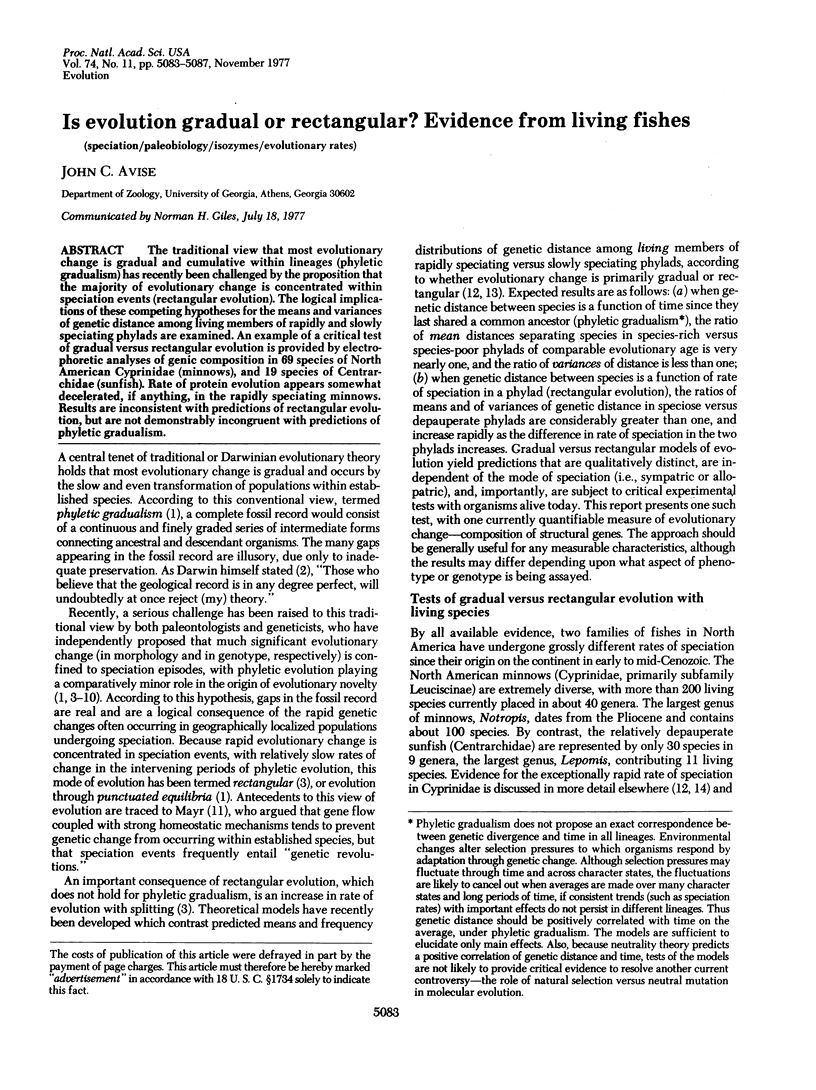
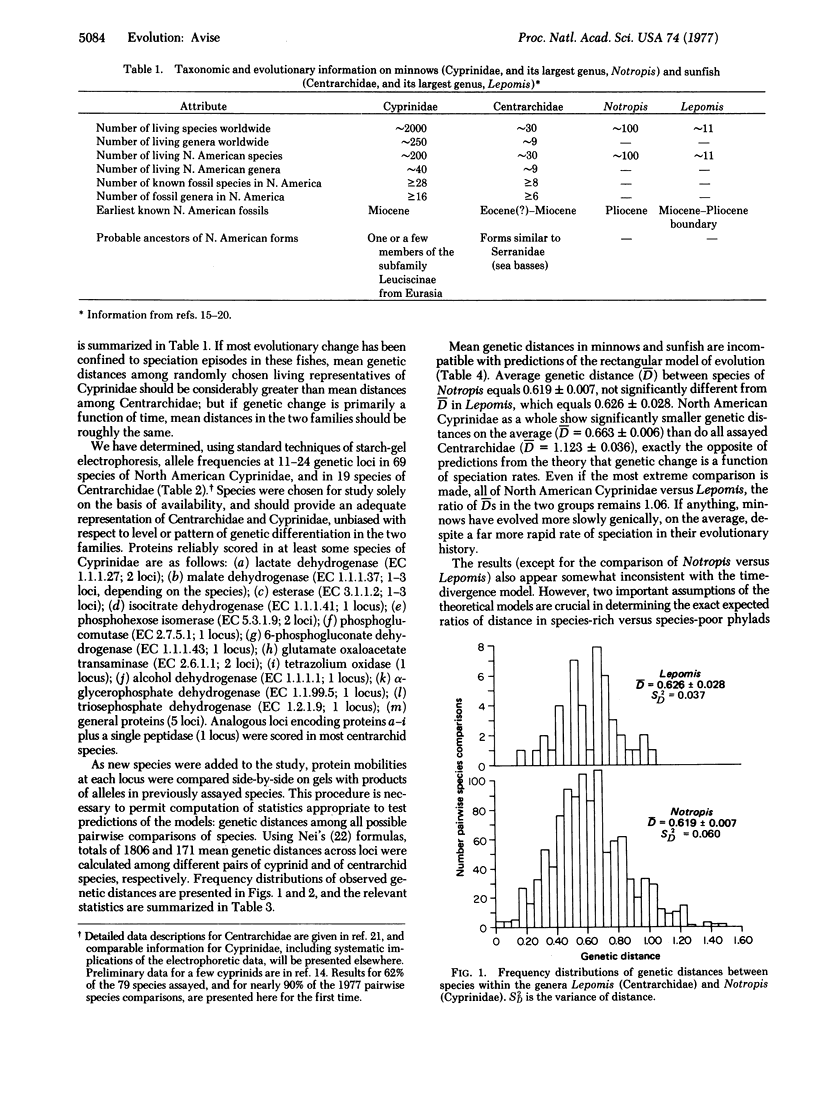
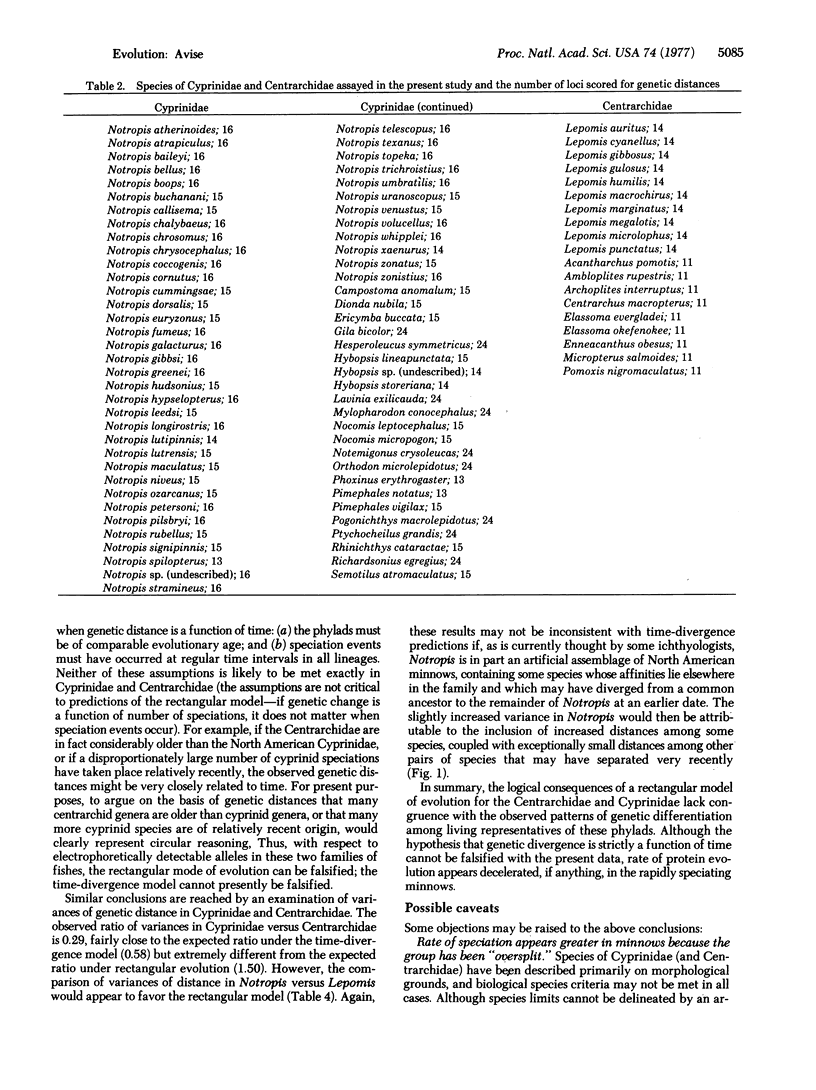
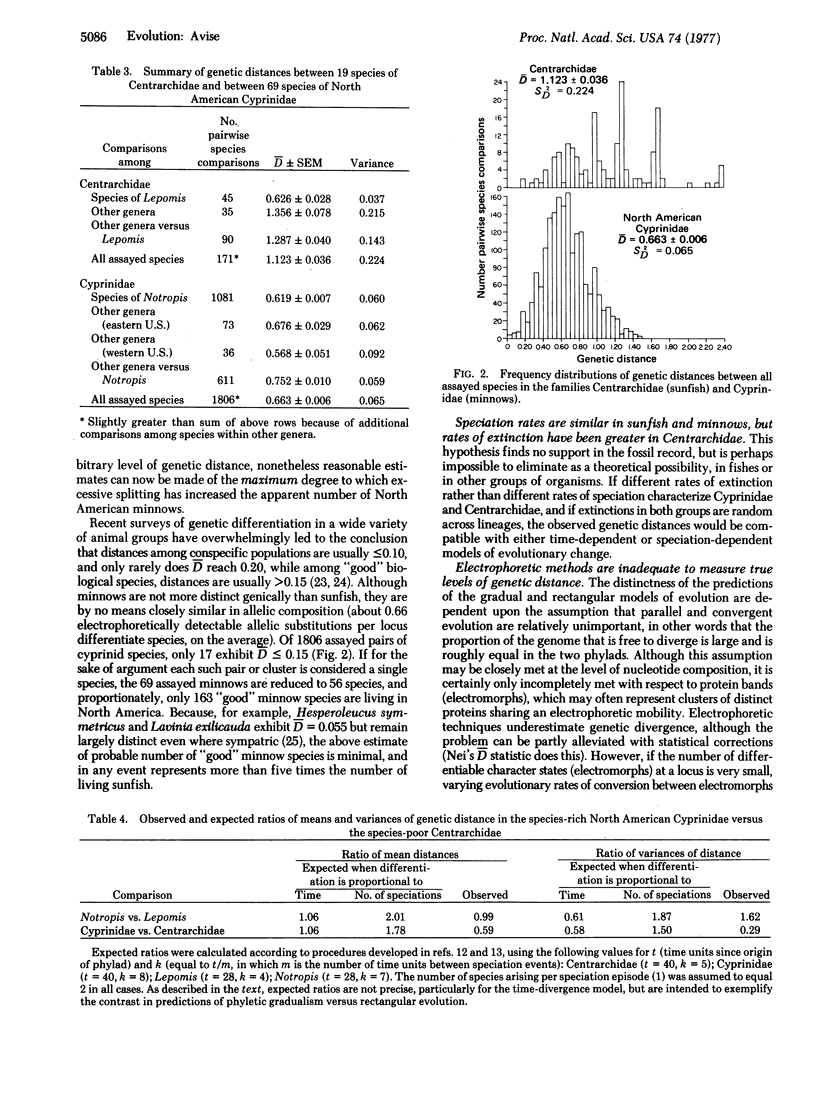
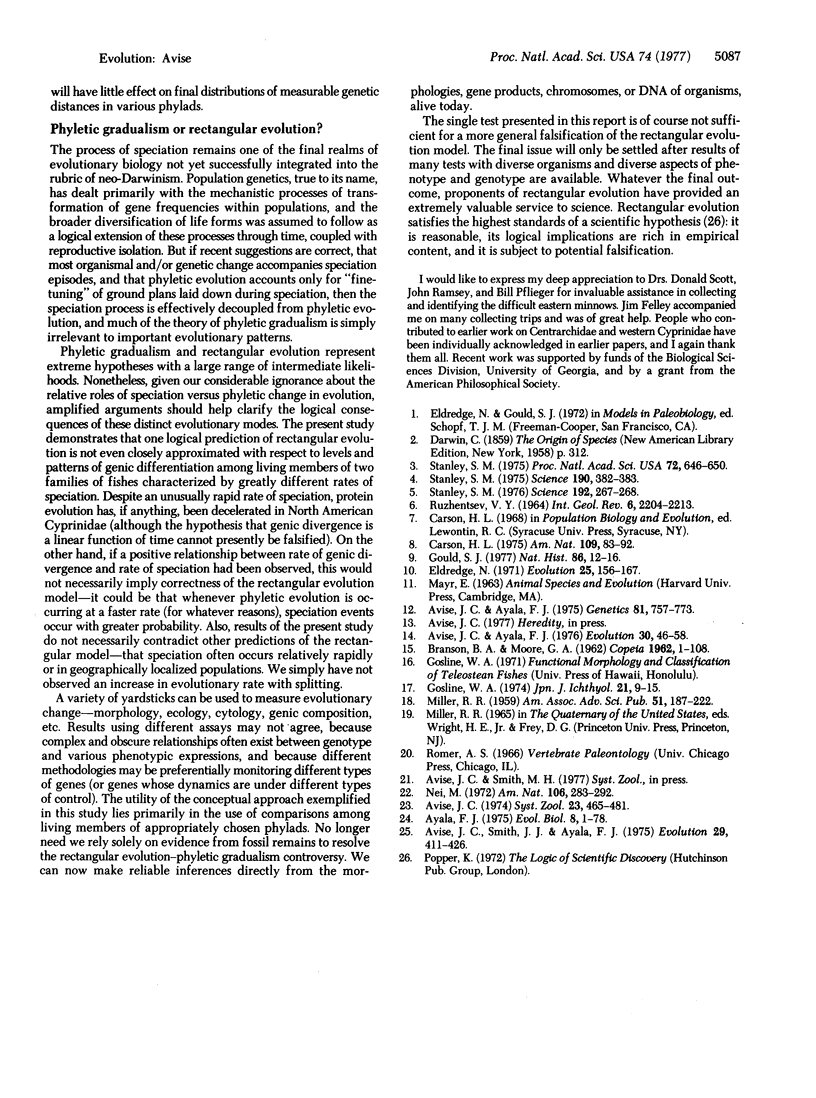
Selected References
These references are in PubMed. This may not be the complete list of references from this article.
- Avise J. C., Ayala F. J. Genetic change and rates of cladogenesis. Genetics. 1975 Dec;81(4):757–773. doi: 10.1093/genetics/81.4.757. [DOI] [PMC free article] [PubMed] [Google Scholar]
- Stanley S. M. A theory of evolution above the species level. Proc Natl Acad Sci U S A. 1975 Feb;72(2):646–650. doi: 10.1073/pnas.72.2.646. [DOI] [PMC free article] [PubMed] [Google Scholar]
- Stanley S. M. Clades versus clones in evolution: why we have sex. Science. 1975 Oct 24;190(4212):382–383. doi: 10.1126/science.1179215. [DOI] [PubMed] [Google Scholar]
- Stanley S. M. Stability of species in geologic time. Science. 1976 Apr 16;192(4236):267–269. doi: 10.1126/science.192.4236.267. [DOI] [PubMed] [Google Scholar]


